Just as a well-composed symphony brings harmony to music, strategically placed plants create balance and tranquility in your living space. You’ll discover how to transform your home into a vibrant sanctuary using proven plant decoration techniques that blend aesthetics with functionality. From maximizing natural light patterns to creating eye-catching plant groupings, these nine essential tips will help you design spaces that both nurture your plants and elevate your home’s ambiance.
Contents
- 1 Assess Your Space’s Natural Light Conditions
- 2 Choose Plants That Match Your Lifestyle
- 3 Create Visual Balance With Plant Heights
- 4 Design Plant Groupings for Maximum Impact
- 5 Mix Plant Textures and Leaf Patterns
- 6 Select the Right Containers and Stands
- 7 Incorporate Plants Into Unexpected Places
- 8 Maintain Proper Plant Spacing and Airflow
- 9 Style With Seasonal Plant Rotations
Assess Your Space’s Natural Light Conditions
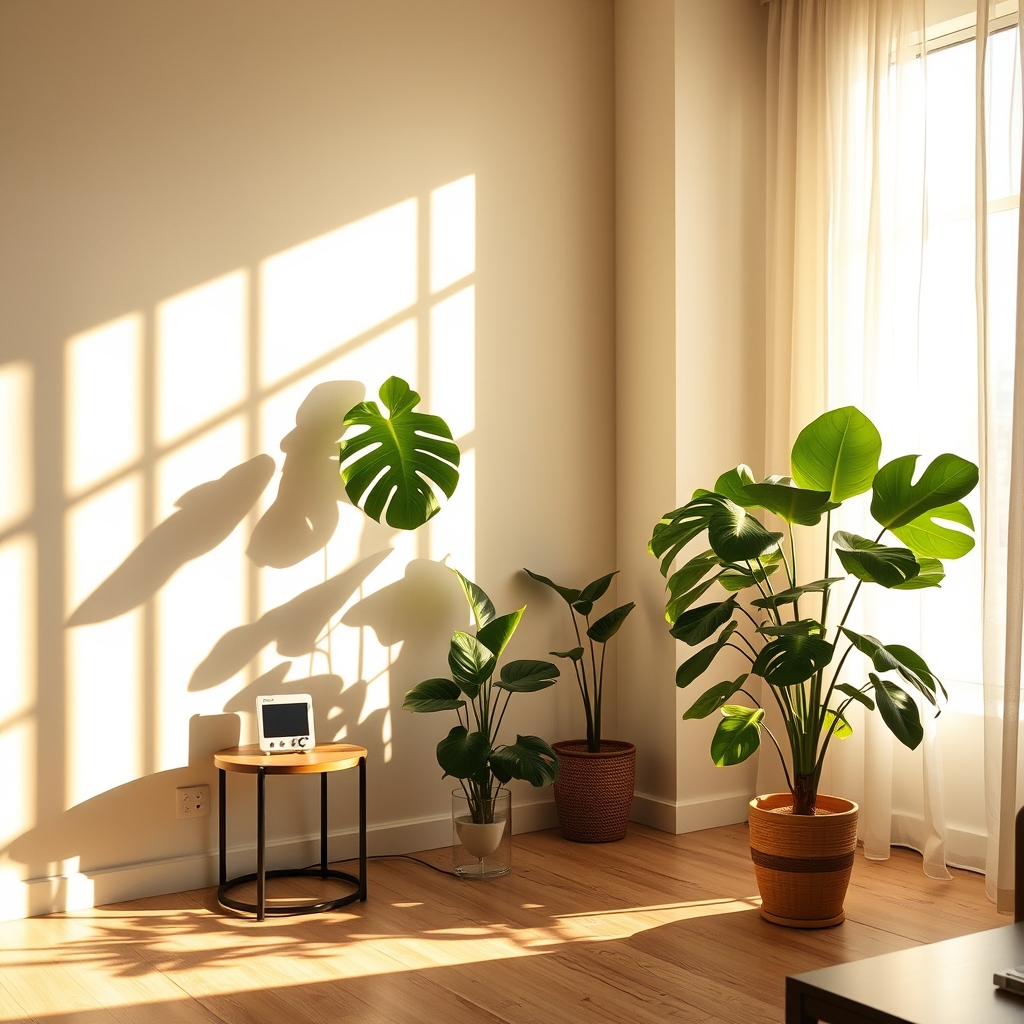
Assessing your space’s natural light conditions involves observing and measuring the sunlight patterns throughout your home during different times of day.
Windows facing south typically receive the strongest, most consistent light, while north-facing windows provide indirect, lower-intensity light.
East-facing windows deliver bright morning sun, and west-facing windows offer strong afternoon light.
Key indicators of light conditions include:
- Shadow patterns across rooms
- Direct sunlight duration
- Light intensity changes throughout the day
- Window size and placement
- Nearby outdoor obstacles (trees, buildings)
- Seasonal light variations
This evaluation helps determine which plants will thrive in specific locations, as some require bright direct light while others prefer low-light environments.
Consider using a light meter or taking photos at different times to track light patterns accurately.
Choose Plants That Match Your Lifestyle
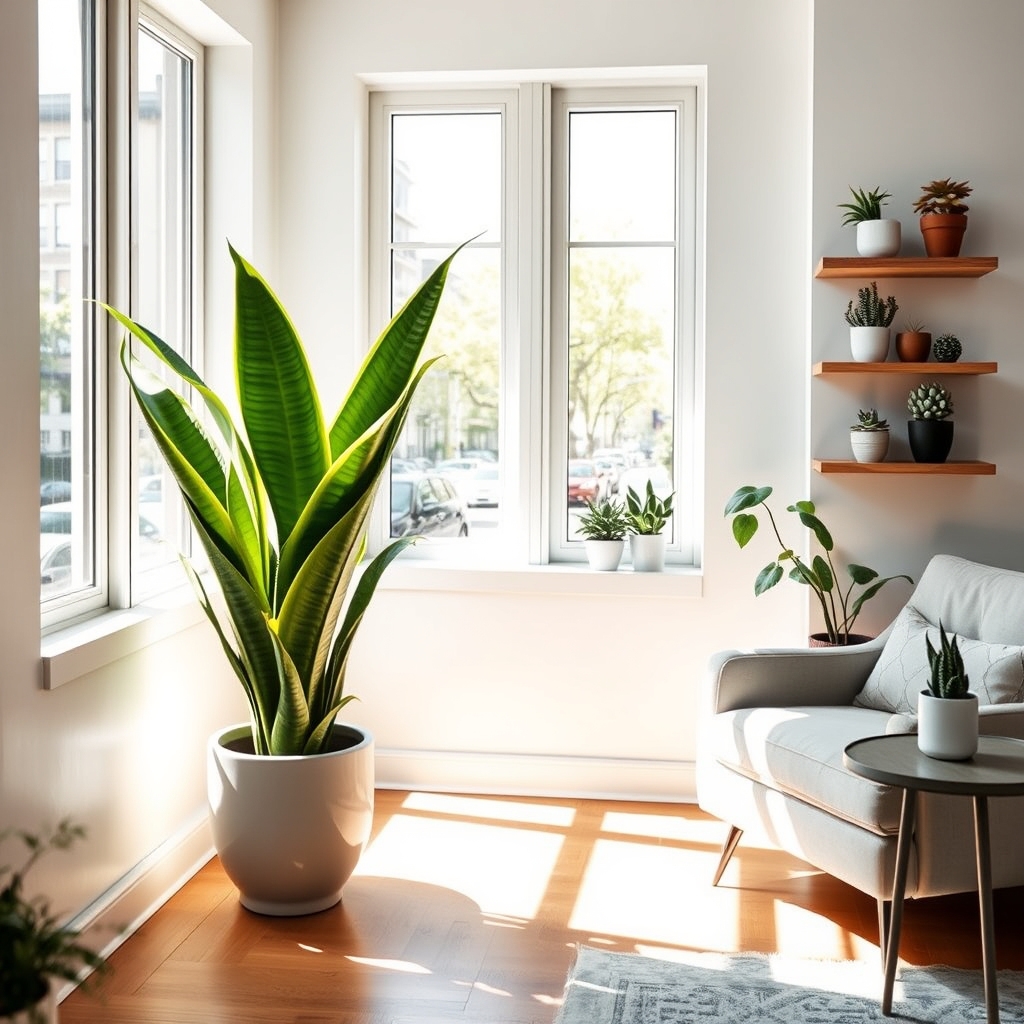
Choosing plants that match your lifestyle involves selecting greenery that aligns with your daily routines, available time, and living conditions. This approach focuses on practical factors like:
- Work schedule and time available for plant care
- Natural light levels in your home
- Travel frequency
- Pet safety considerations
- Your experience level with plant care
- Local climate and indoor temperature control
For busy individuals, low-maintenance options like snake plants or ZZ plants thrive with minimal attention.
Those who travel frequently benefit from drought-resistant succulents.
Plant enthusiasts with more time might enjoy higher-maintenance varieties like orchids or fiddle leaf figs.
The key feature of lifestyle-matched plant selection is sustainability – creating a natural environment that flourishes within your existing daily patterns rather than requiring significant lifestyle adjustments.
Create Visual Balance With Plant Heights

Creating visual balance with plant heights involves strategically arranging plants of different sizes to achieve a harmonious and aesthetically pleasing display.
Tall plants serve as focal points or background elements, medium-sized plants fill the middle ground, and shorter plants occupy the foreground. This layered approach creates depth and interest, similar to how a landscape naturally occurs in nature.
Key elements include:
- Positioning taller plants against walls or in corners
- Placing medium-height plants to bridge gaps between tall and short specimens
- Using small plants and trailing varieties at edges or as ground cover
- Alternating heights to create rhythm and prevent monotony
- Grouping plants in odd numbers for natural-looking arrangements
- Maintaining proportional spacing between different height levels
This arrangement technique works in both single plant stands and larger groupings, helping to draw the eye through the space while maintaining visual harmony.
Design Plant Groupings for Maximum Impact
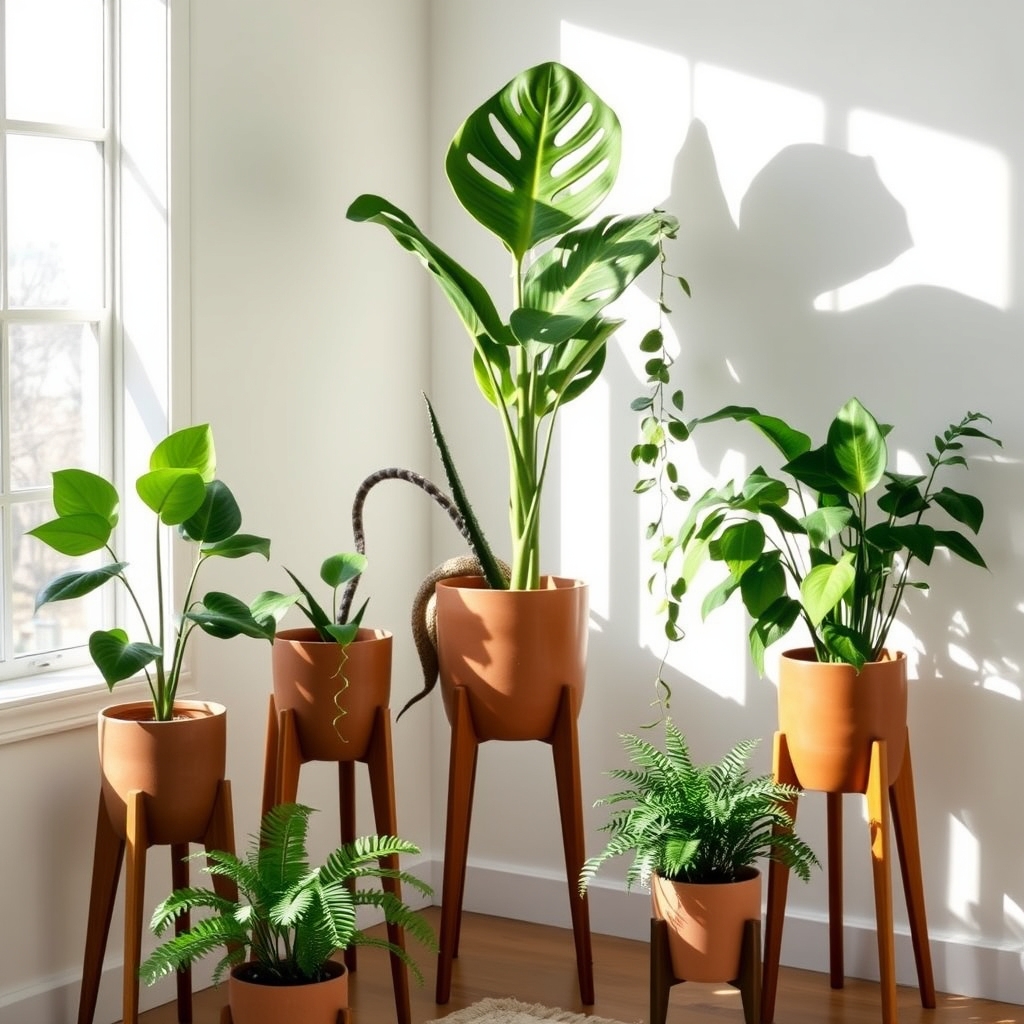
Strategic plant groupings create visual interest and focal points in any space. Plants are arranged in clusters of odd numbers (3, 5, or 7) at varying heights and textures to produce a layered, natural look. Taller plants serve as anchors in the back, medium-height plants fill the middle ground, and shorter plants cascade in front.
Contrasting leaf shapes, colors, and growth patterns within groupings add depth and drama.
Key features include:
- Mixed pot sizes and elevations using stands or risers
- Complementary plant varieties that share care requirements
- Negative space between groupings to prevent overcrowding
- Color coordination through both foliage and containers
- Natural, asymmetrical arrangements that guide the eye
This deliberate clustering technique transforms random plant collections into cohesive, professional-looking displays that enhance room aesthetics.
Mix Plant Textures and Leaf Patterns
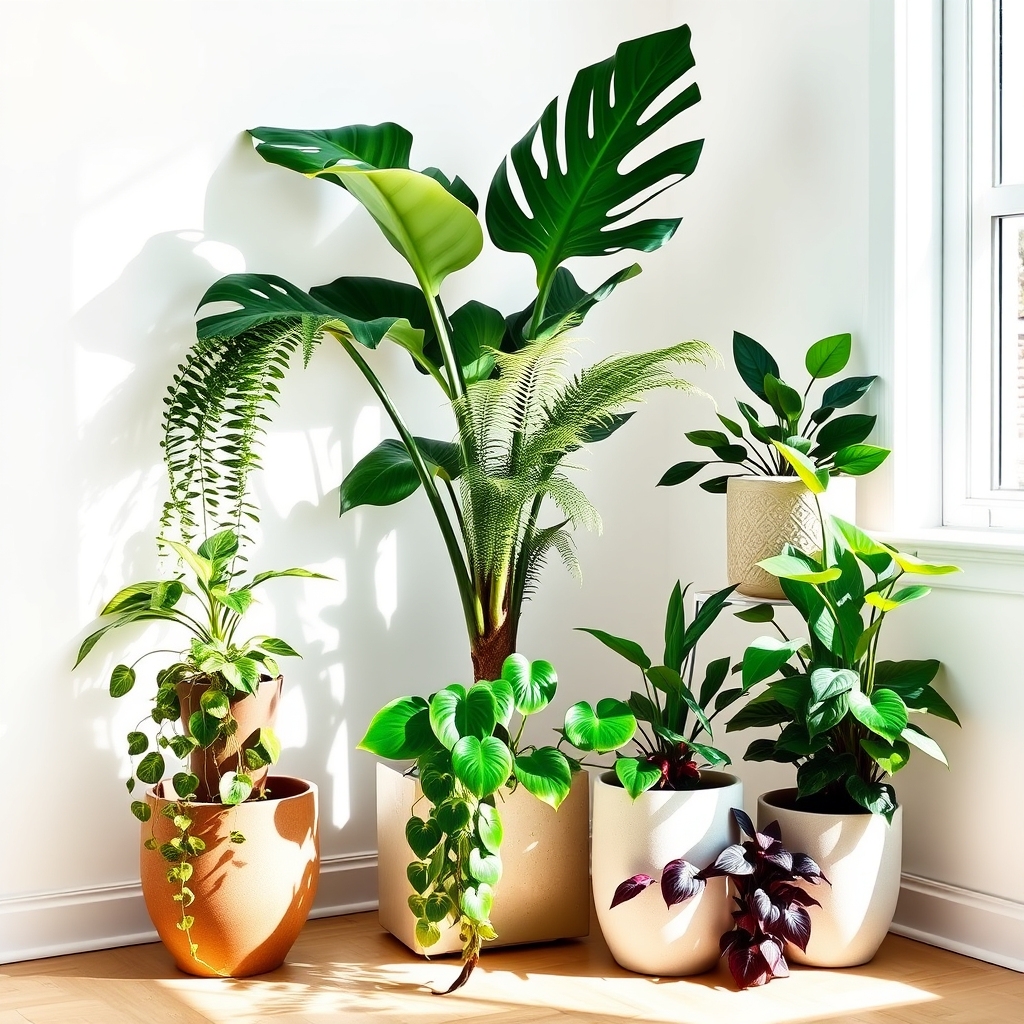
Mixing plant textures and leaf patterns creates visual interest and depth in your home decor through strategic combinations of different foliage types.
Large, smooth leaves like those of rubber plants can be paired with delicate, lacy ferns, while spiky snake plants complement the rounded leaves of peperomias.
Various leaf patterns – striped, variegated, spotted, or solid – work together to create engaging displays.
Different textures catch light uniquely, adding dimension to plant groupings.
Effective combinations might include pairing glossy philodendron leaves with matte pothos, or coupling the velvety surface of African violets with the waxy finish of succulents.
This layered approach prevents monotony and draws the eye through the space.
Select the Right Containers and Stands

Selecting the right containers and stands involves choosing vessels and supports that complement both your plants and interior design. Containers range from classic terracotta pots to modern ceramic planters, metallic vessels, and hanging baskets.
Plant stands vary from simple metal tripods to elaborate wooden pedestals, tiered shelving units, and wall-mounted brackets.
Key considerations include:
- Container size matching plant growth requirements
- Drainage holes or saucers to prevent water damage
- Materials that suit room aesthetics and moisture levels
- Height variations to create visual interest
- Proportional balance between container and plant size
- Stands that provide stability and proper weight distribution
- Mixed materials and textures for visual appeal
- Space-saving vertical options for small areas
The right combination of containers and stands can elevate plants from simple greenery to striking decorative elements while ensuring optimal growing conditions.
Incorporate Plants Into Unexpected Places
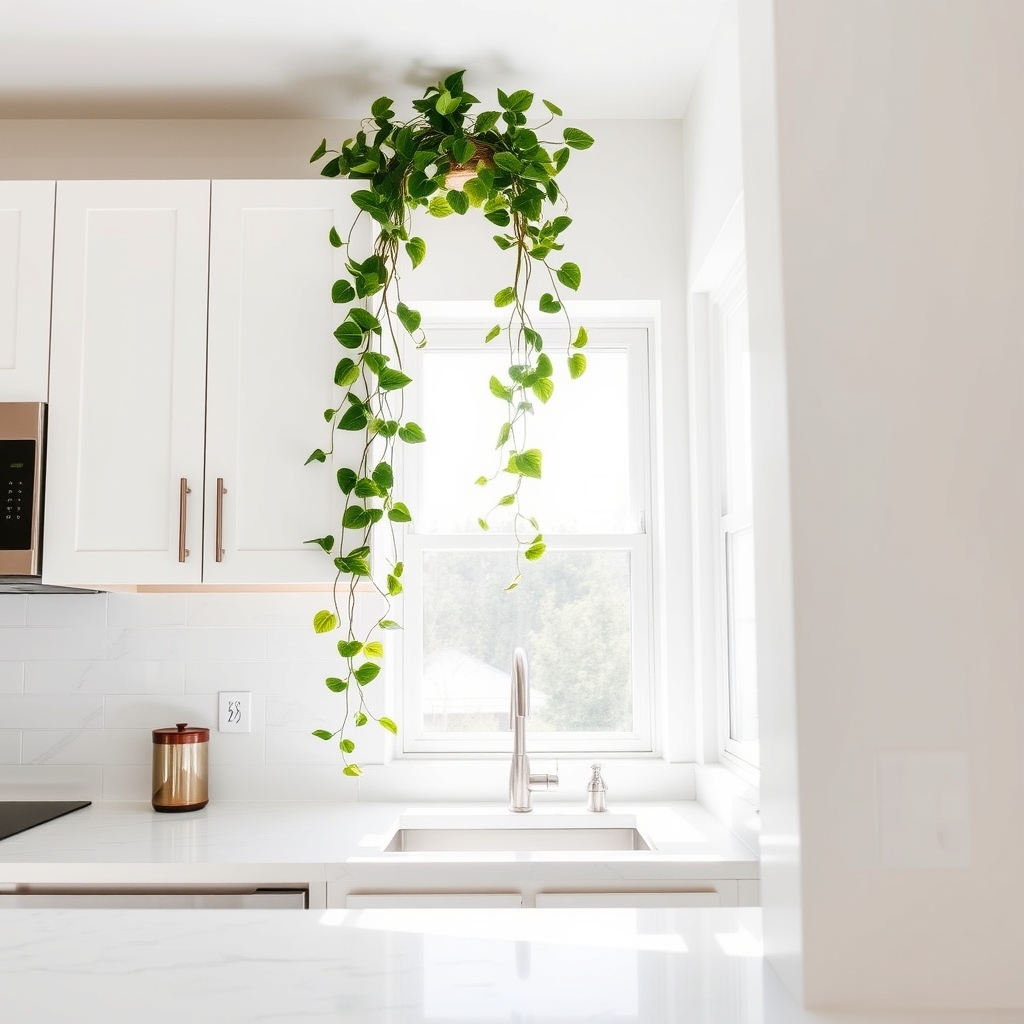
Incorporating plants into unexpected places transforms ordinary spots into green surprises throughout the home. Position trailing plants on top of kitchen cabinets, hang air plants from curtain rods, or place small succulents in bathroom soap dishes.
Mount vertical gardens on unused wall spaces, tuck tiny ferns into bookshelf corners, or arrange potted herbs along window frames. Unexpected placement creates visual interest and maximizes space usage while bringing nature into overlooked areas.
Mini plants can occupy unused drawer pulls, windowsills in laundry rooms, or even suspended from light fixtures, turning functional spaces into opportunities for green design elements.
Maintain Proper Plant Spacing and Airflow
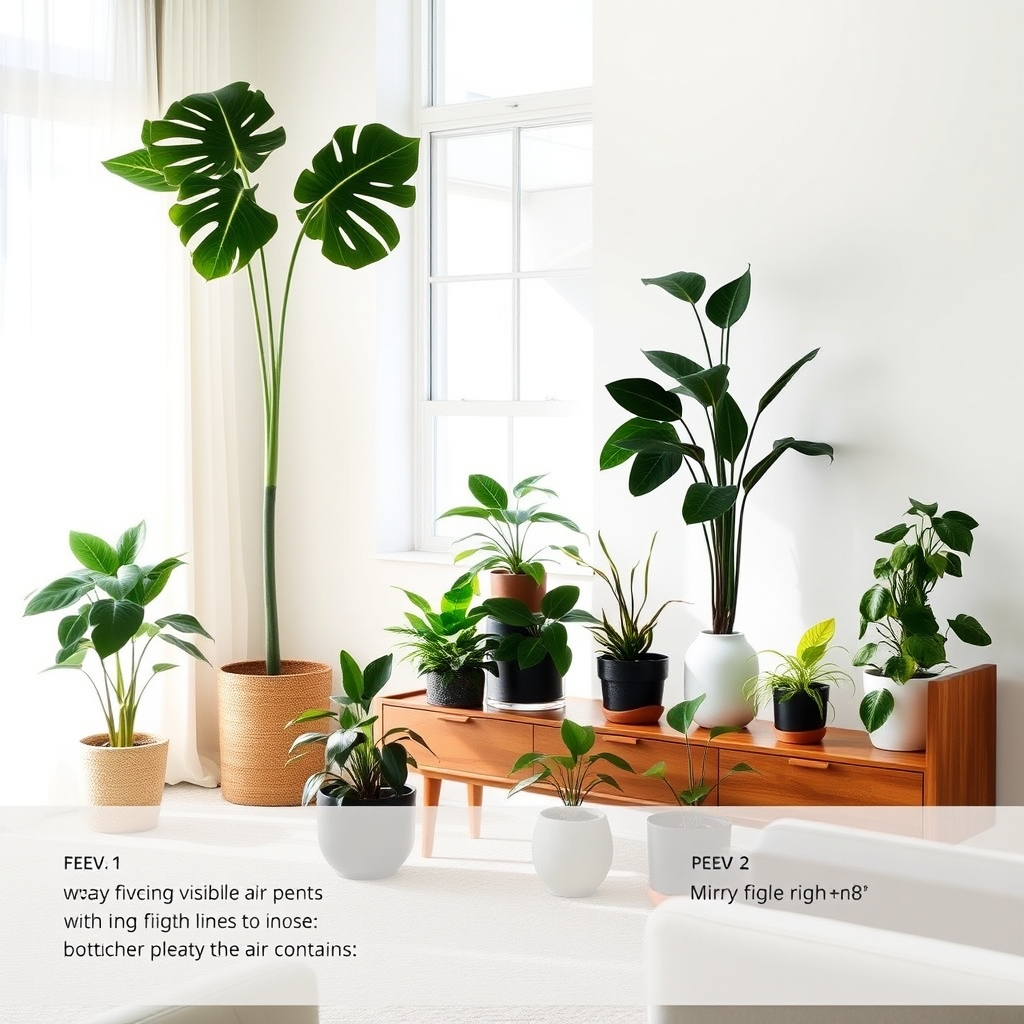
Proper plant spacing and airflow are essential elements for both plant health and aesthetic appeal in home decor.
Plants require adequate space between them to prevent overcrowding, allow for natural growth patterns, and create visual balance in the room. The ideal arrangement maintains 6-12 inches between most houseplants, with larger specimens needing more space.
Good airflow around plants helps prevent fungal issues and promotes stronger stems. Plants should be positioned away from direct HVAC vents while still receiving sufficient air circulation.
The arrangement should appear natural and uncluttered, with enough room for leaves to spread without touching neighboring plants.
Visual markers of proper spacing include:
- Clear sight lines between plants
- No overlapping or crowded foliage
- Equal distribution of greenery
- Room for future growth
- Easy access for watering and maintenance
Style With Seasonal Plant Rotations

Seasonal plant rotations bring dynamic change to home decor by swapping out plants based on the time of year. This decorating approach displays spring bulbs and flowering plants during warmer months, transitions to rich-colored foliage in autumn, and features hardy indoor varieties during winter.
The rotation system allows homeowners to maintain fresh, seasonally appropriate displays while ensuring plants thrive in their optimal growing periods. Key features include coordinating pot colors and styles with each season’s theme, grouping plants at varying heights, and incorporating both flowering and foliage specimens for visual interest.
This method keeps indoor spaces engaging year-round while working with nature’s natural growing cycles.
